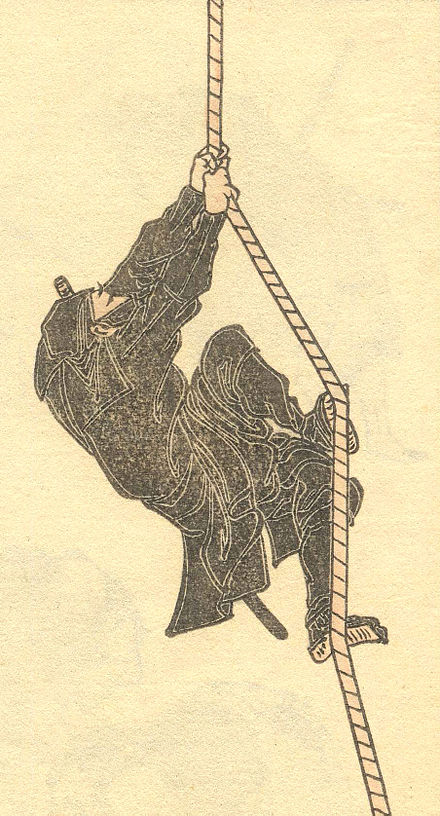
Боевые искусства — это систематизированные системы и традиции боя , практикуемые по ряду причин, таких как самооборона ; военные и правоохранительные приложения; соревнование ; физическое, умственное и духовное развитие; развлечение ; и сохранение нематериального культурного наследия страны. ( Полная статья... )
Хотя самые ранние свидетельства существования боевых искусств насчитывают тысячелетия, истинные корни восстановить трудно. Неотъемлемые модели человеческой агрессии , которые вдохновляют на практику имитационных боев (в частности, борьбы ) и оптимизацию серьезного рукопашного боя как культурные универсалии , несомненно, унаследованы от дочеловеческой стадии и были превращены в « искусство » с самого раннего появления этой концепции. Действительно, многие универсалии боевого искусства закреплены спецификой физиологии человека и не зависят от конкретной традиции или эпохи.
Особые боевые традиции стали идентифицироваться в классической античности , с такими дисциплинами, как шуай цзяо , греческая борьба или теми, которые описаны в индийском эпосе или в « Весенних и осенних анналах Китая » . ( Полная статья... )



бразилец, натурализованный как Отавио Маэда ( португальское произношение: [oˈtavju maˈedɐ] ), был японским дзюдоистом ( практикующим дзюдо ) и призером соревнований без правил. Он был известен как Граф Комбат или Конде Кома на испанском и португальском языках, это прозвище он получил в Испании в 1908 году. Вместе с Антонио Сошихиро Сатаке (еще одним натурализованным бразильцем) он стал пионером дзюдо в Бразилии, Великобритании и других странах.
Маэда сыграл фундаментальную роль в развитии бразильского джиу-джитсу , в том числе благодаря обучению Карлоса Грейси и других членов семьи Грейси . Он также был пропагандистом японской эмиграции в Бразилию . За свою карьеру Маэда выиграл более 2000 профессиональных боев, хотя это утверждение оспаривается. Его достижения привели к тому, что его назвали «самым крутым человеком из когда-либо живших» и отцом бразильского джиу-джитсу. ( Полная статья... )
«Ип Ман» (кит. 叶问 / 葉問) — гонконгскийбиографический фильм о боевых искусствахоснованный на жизниИп Мана,гроссмейстерабоевого искусстваВин Чуни учителяБрюса Ли. В фильме рассказывается о событиях из жизни Ипа, которые предположительно произошли в городеФошаньво времяяпоно-китайской войны. Режиссером фильма выступилУилсон Йип, в роли Ип Мана играетДонни Йен, ахореографию боевых искусствпоставилСаммо Хунг. В актерский состав второго плана входятСаймон Ям,Линн Хунг,Лам Ка-тун,Син Ю,Хироюки ИкеучииТенма Сибуя. Этот фильм был совместным производством Китая и Гонконга и стал последним фильмом, распространяемым Mandarin Films.
«Ип Ман» — первый фильм из серии фильмов «Ип Ман» . Премьера фильма состоялась 10 декабря 2008 года в Пекине, а 19 декабря 2008 года он был показан в кинотеатрах Гонконга, получив широкое признание критиков и публики. Перед выходом фильма Рэймонд Вонг объявил, что будет продолжение; вторая часть под названием Ip Man 2 была выпущена в апреле 2010 года, третья часть под названием Ip Man 3 была выпущена в 2015 году, а Ip Man 4: The Finale была выпущена в 2019 году . Ip Man собрал более 22 миллионов долларов США по всему миру, несмотря на то, что выпускается в Северной Америке и большей части Европы. После успеха фильм был номинирован на 12 гонконгских кинопремий , получив награды за лучший фильм и лучшую хореографию боевика .
Сенегальская борьба ( Njom на серере , Lutte sénégalaise или просто Lutte avec frappe на французском языке , Laamb на языке волоф , Siɲɛta на языке бамбара ) — вид народной борьбы, традиционно исполняемый народом серер , а теперь национальный вид спорта в Сенегале и некоторых частях Гамбии . и является частью более крупной западноафриканской формы традиционной борьбы (фр. Lutte Traditionnelle ). Сенегальская форма традиционно допускает удары руками ( фраппе ), единственная из западноафриканских традиций, допускающая это. Поскольку с 1990-х годов вокруг Lutte Traditionnelle возникла более крупная конфедерация и чемпионат, сенегальские бойцы теперь практикуют обе формы, официально называемые Lutte Traditionnelle sans frappe (для международной версии) и Lutte Traditionnelle avec frappe для ударной версии. ( Полная статья... )
См. список справа проектов, связанных с боевыми искусствами, которые организуют работу над этими статьями. Вы также можете добавить себя в список Википедистов по боевым искусствам.
Если вы встретите статью, посвященную боевым искусствам, добавление шаблона проекта {{ WikiProject Martial arts }} на страницу обсуждения поможет определить их для улучшения и дать ссылки на соответствующие статьи. Для бокса, фехтования, смешанных единоборств и сумо. Используйте {{ WikiProject Boxing }}, {{ WikiProject Fencing }}, {{ WikiProject смешанные единоборства }} и {{ WikiProject Sumo }} соответственно.
Мониторинг и участие в дебатах об удалении ( бокс ).
Википедия запросила изображения мастеров боевых искусств , бойцов смешанных единоборств и боксеров .
Следующие дочерние проекты Фонда Викимедиа предоставляют дополнительную информацию по этому вопросу: